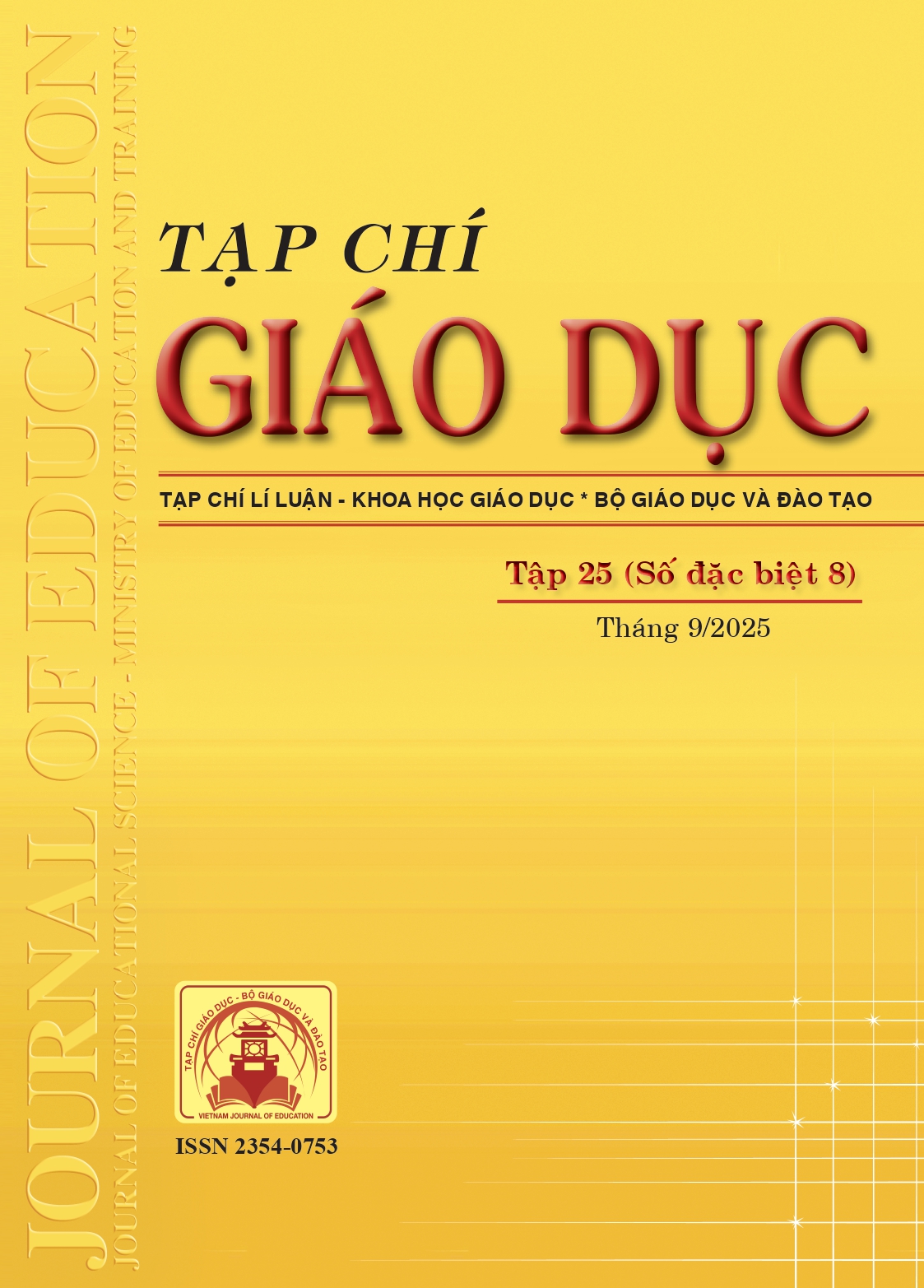Môi trường là “người giáo viên thứ ba” trong cách tiếp cận Reggio Emilia: Nguyên lí giáo dục, vai trò và tiêu chí thiết kế
Tóm tắt
In the context of early childhood education increasingly shifting toward holistic development and the recognition of children as active, creative learners, the Reggio Emilia approach has gained attention as a progressive, humanistic, and practice-oriented educational philosophy. This article focuses on an in-depth analysis of the principle of “The Environment as the Third Teacher” one of the core pillars of the Reggio Emilia approach, alongside other foundational concepts such as the image of the child, the hundred languages of children, pedagogical documentation, project-based learning, and the roles of family and community. Based on a synthesis of theoretical foundations, the study proposes eight key criteria for designing educational environments: aesthetics, collaboration, interdisciplinarity, active learning, transparency, flexibility, reciprocity, and narration. These criteria must be applied in an integrated and coherent manner for the environment to truly serve as a dynamic agent that supports and enriches children’s learning and holistic development.
Tài liệu tham khảo
Bullard, J. (2014). Creating Environments for Learning: Birth to Age Eight (2nd Edition). Pearson Higher Ed.
Cadwell, L. B. (1997). Bringing Reggio Emilia home: An innovative approach to early childhood. Teachers College Press.
Cadwell, L. B. (2003). Bringing Learning to Life: The Reggio Approach To Early Childhood Education. New York: Teachers College Press.
Cadwell, L. B. (2018). Phương pháp giáo dục Reggio Emilia. NXB Lao động.
Ceppi, G., & Zini, M. (1998). Children, Spaces, Relations. Metaproject for an Environment for Young Children. Domus Academy Research Center, Milan.
Curtis, D., & Carter, M. (2008). Learning together with young children: A curriculum framework for reflective teachers. Redleaf Press.
Curtis, D., & Carter, M. (2014). Designs for living and learning: Transforming early childhood environments. Redleaf Press.
Edwards, C., Gandini, L., & Forman, G. (1998). The hundred languages of children: The Reggio Emilia approach advanced reflections. Bloomsbury Publishing USA.
Edwards, C., Gandini, L., & Forman, G. (2011). The Hundred Languages of Children: The Reggio Emilia Approach - The Reggio Emilia Experience in the Transformation (Third Edition). Praeger.
Fraser, S. (2002). Authentic childhood: Exploring Reggio Emilia in the classroom. Delmar Thomson Learning.
Fraser, S. (2011). Authentic Childhood: Experiencing Reggio Emilia in the Classroom (Third Edition). Australia : Canada : Nelson, Thomson Learning.
Fu, V. R., Stremmel, A. J., & Hill, L. T. (2002). Teaching and learning: Collaborative Exploration of the Reggio Emilia Approach. Prentice Hall.
Gandini, L., Hill, L., Cadwell, L., & Schwall, C. (2005). In the Spirit of the Studio: Learning from the Atelier of Reggio Emilia, Second Edition. Teachers College Press.
Mitchiner, J., Batamula, C., & Kite, B. J. (2018). Hundred Languages of Deaf Children: Exploring the Reggio Emilia Approach in Deaf Education. American Annals of the Deaf, 163(3), 294-327.
Pairman, A., & Terreni, L. (2001). If the environment is the third teacher what language does she speak. In Fourth Child and Family Policy Conference, Dunedin l (Vol. 26).
Rinaldi, C. (2006). In Dialogue with Reggio Emilia: Listening, Researching and Learning. Routledge.
Strong-Wilson, T., & Ellis, J. (2007). Children and place: Reggio Emilia’s environment as third teacher. Theory into Practice, 46(1), 40-47.
Thornton, L., & Brunton, P. (2005). Understanding the Reggio Approach: Reflections on the Early Childhood Experience of Reggio Emilia. David Fulton Pub.
Thornton, L., & Brunton, P. (2010). Bringing the Reggio Approach to your Early Years Practice. Routledge.
Vecchi, V. (2010). Art and Creativity in Reggio Emilia: Exploring the Role and Potential of Ateliers in Early Childhood Education. Routledge.
Wurm, J. (2005). Working in the Reggio way: A Beginner’s Guide for American Teachers. Redleaf Press.
Đã Xuất bản
Cách trích dẫn
Số
Chuyên mục
Giấy phép

Tác phẩm này được cấp phép theo Ghi nhận tác giả của Creative Commons Giấy phép quốc tế 4.0 .












